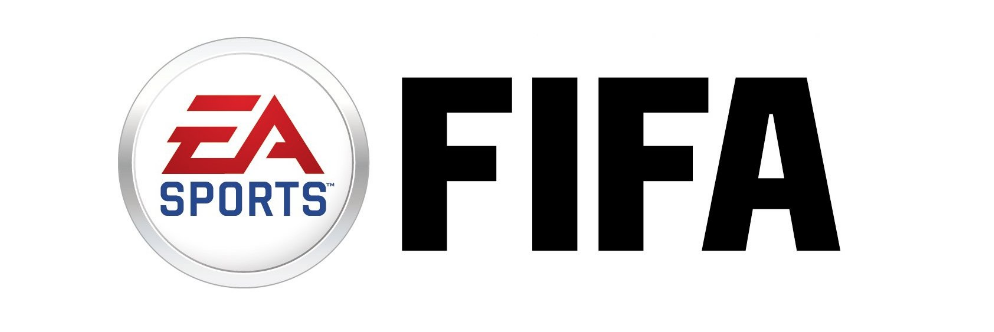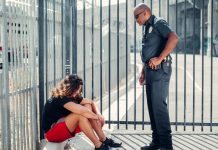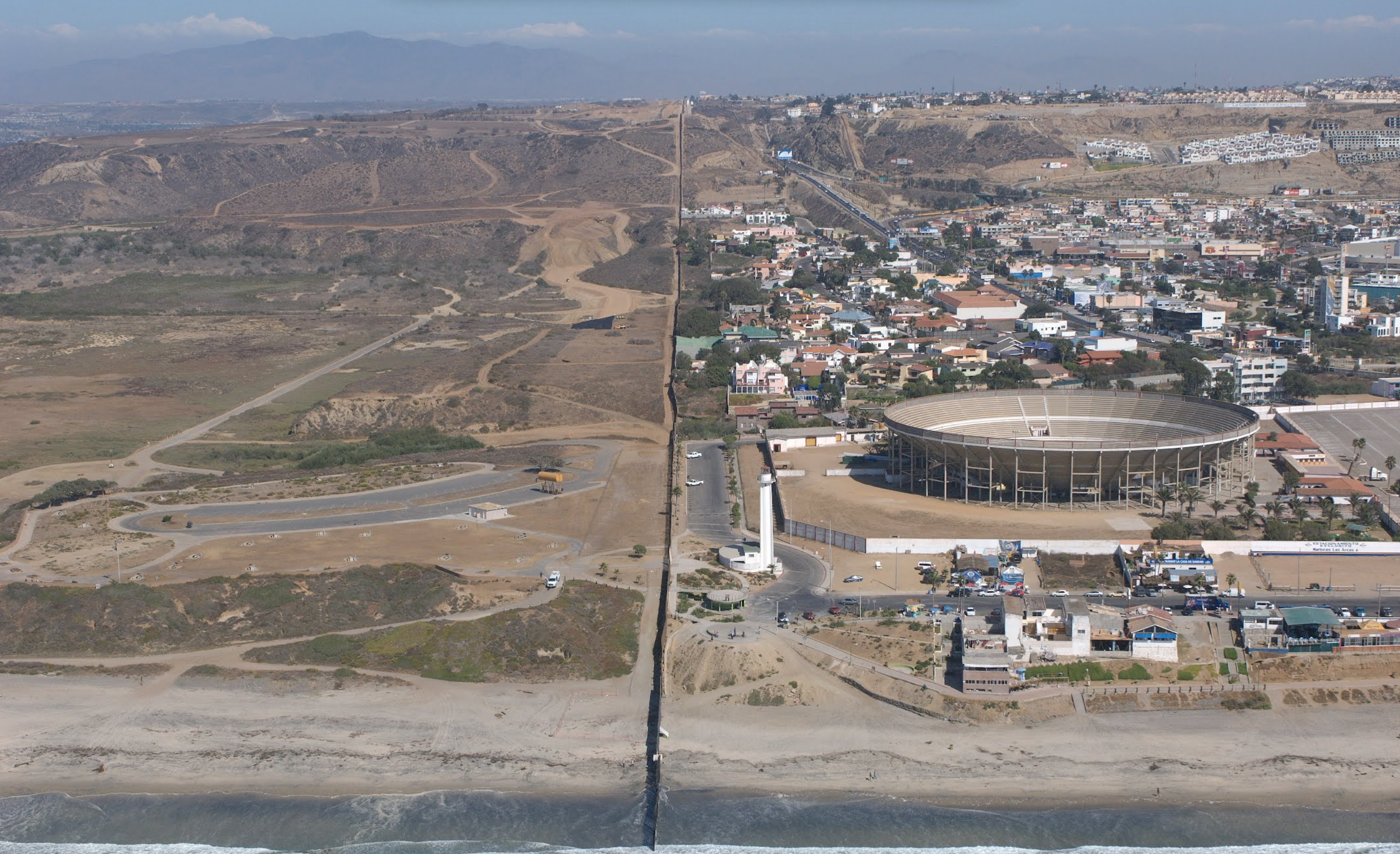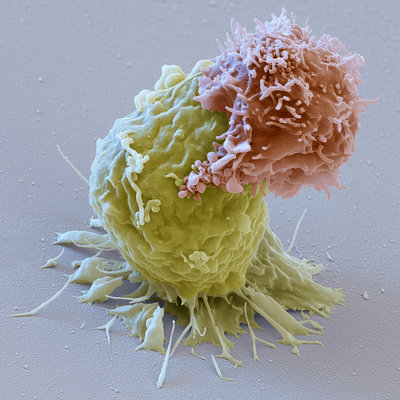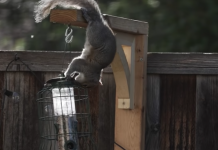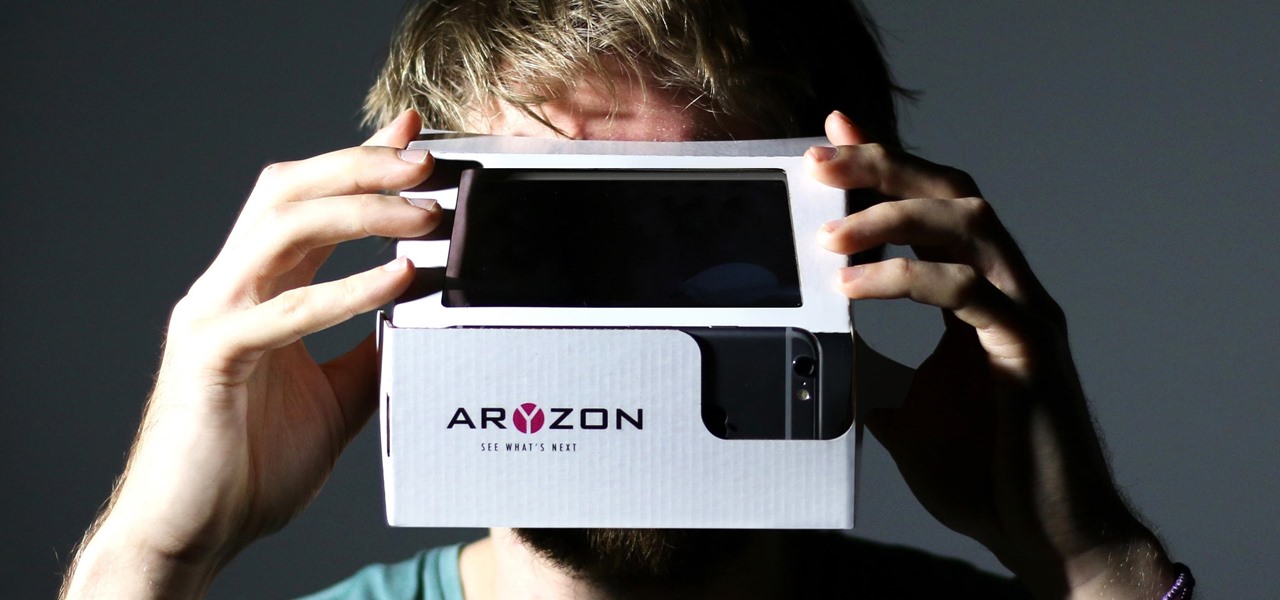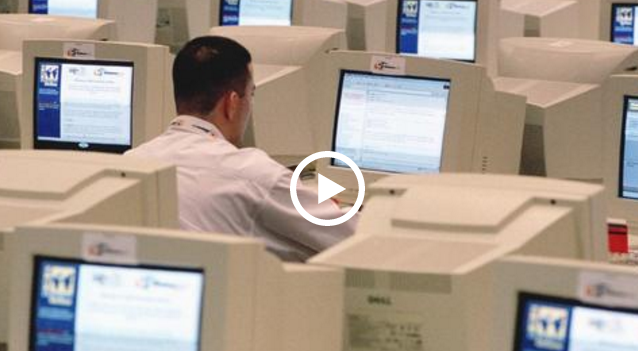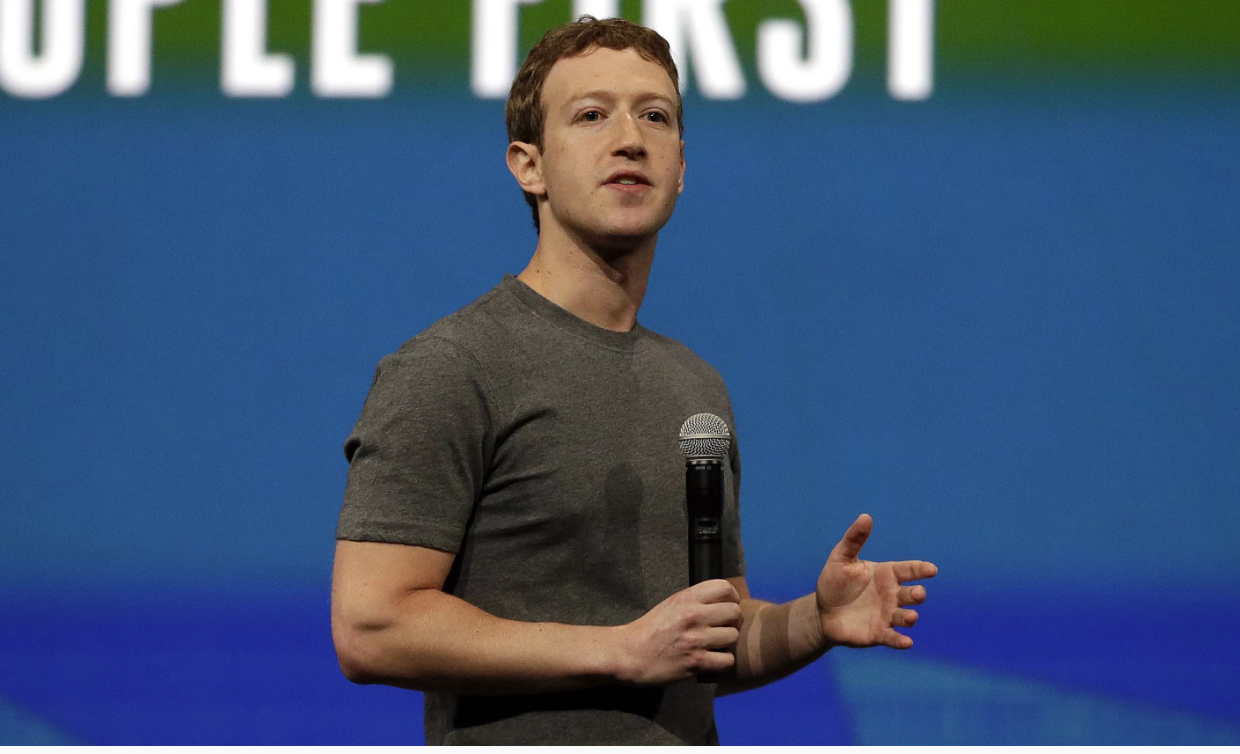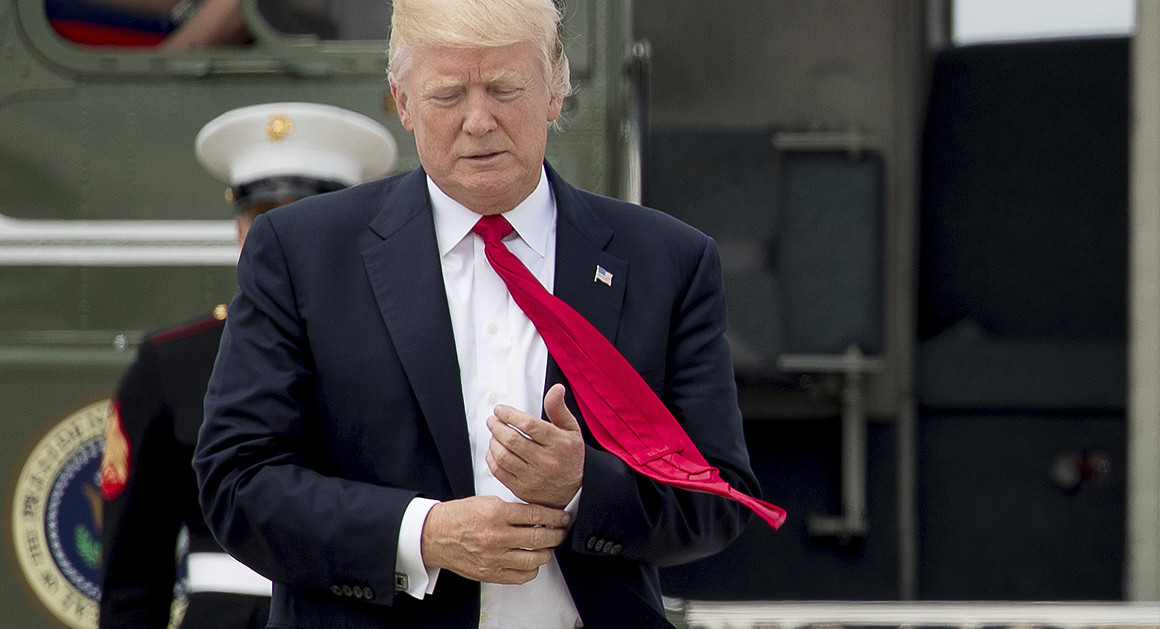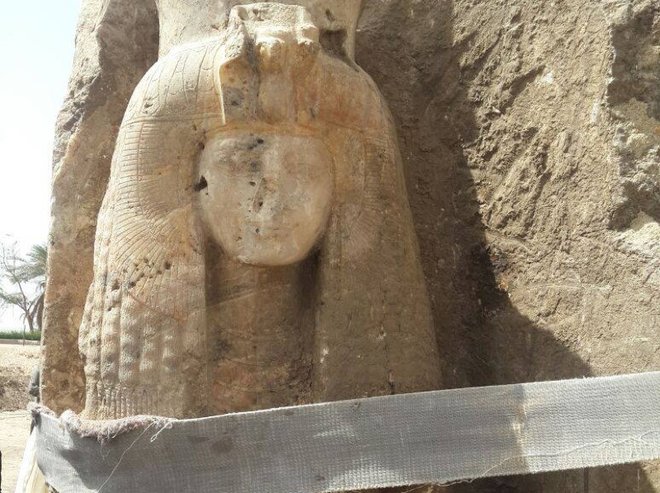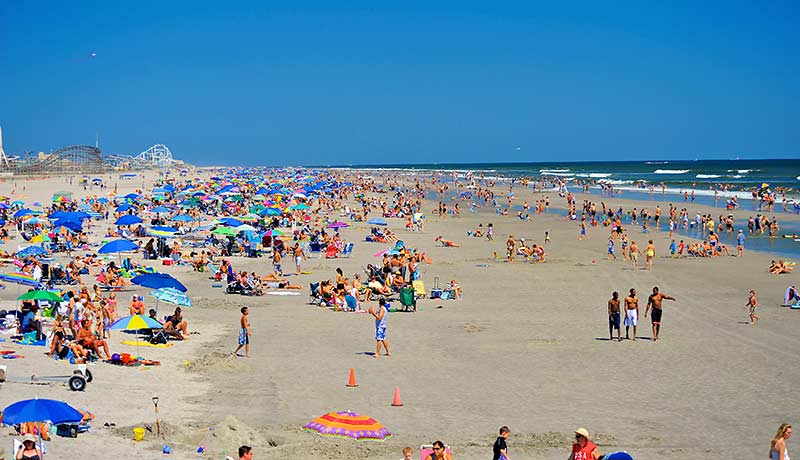THE WASHINGTON POST
HAMBURG — German security forces clad in riot gear clashed with protesters on the eve of the Group of 20 summit here, using water cannons and pepper spray to disperse a group with anarchist sympathies that had refused to stand down.
The skirmish followed an hour-long standoff on a street that runs alongside Hamburg’s downtown harbor. Thousands of protesters were gathered, and some began lobbing glass bottles and other objects as police rushed a group of “black bloc” activists huddled in the middle of the street. They were dressed in dark clothes with their faces concealed and carried signs condemning the state and promising, “Welcome to hell.”
Police vehicles rolled toward the protesters, as loud blasts went off, apparently from pyrotechnics set off by protesters. The Hamburg police said at least one of its officials, a spokesman,was injured, and medics could be seen treating injuries on the sidelines of the demonstration.
The street marches and rallies planned for the summit — like at past G-20 gatherings — cover a range of issues including calls for environmental protections, denunciations of ethnic nationalism and opposition to free trade.
But the Hamburg protests have gained added momentum as a stand against President Trump and his brand of “America First” populism. An estimated 100,000 protesters were expected to converge on the old merchant city during the G-20 summit, which begins Friday.
After gathering at a harborside plaza Thursday, protesters began marching through the city. Police called on demonstrators to remove masks, and some protesters threw rocks, bottles and sticks at police authorities said. Police responded by spraying protesters with water cannons as people recorded the scene on their cellphones.
Video footage showed masked protesters blocking streets with building materials from a construction site and setting small fires. Elsewhere, rows of helmeted riot police backed by water cannons and armored vehicles faced off against demonstrators chanting anti-capitalist slogans.
The Hamburg police urged “unconnected parties” to stay away from the protest scenes and reported on Twitter that a Swedish furniture store and a bank were damaged.
“Violent people are arming themselves with pieces of scaffolding and stones,” the police department tweeted. “We have used our water cannons again against people who are seeking clashes with forces. . . . Authorities report that they have been attacked with sticks and bottles.”
Police expressed concern that violence could escalate after nightfall. “We are skeptical as to whether this evening and tonight will remain peaceful,” Hamburg police chief Ralf Martin Meyer said on ZDF television.
As Hamburg mounted the largest police operation in the city’s history, at least 20,000 officers were being deployed at about 30 registered demonstrations. Forty-five water cannons were available to disperse crowds. Some were used Tuesday evening to clear the streets of early protesters.
Before Thursday’s protests began, officials had raised fears that they could turn violent. But the gathering at first resembled an open-air concert with bands from all over the world performing. People shared food and art materials for posters, as police formed an enormous cordon.
Moored a short distance away was a ship with a message plastered on its flank — “Keep global trade open” — at odds with the signs carried by protesters.
The protests draw on a tradition of left-wing activism in Germany’s second-largest city and the birthplace of its chancellor, Angela Merkel. She is hosting a roster of foreign leaders — including divisive figures such as Trump, Russia’s Vladimir Putin and Turkey’s Recep Tayyip Erdogan — at a downtown conference center and the lofty Elbphilharmonie concert hall, a crown jewel of the city.
A few miles away is the nerve center of left-wing German radicalism, Rote Flora, a former theater where activists have squatted for nearly three decades. Its members were some of those planning the anti-capitalist protest, which they dubbed “Welcome to Hell.”
Security officials say the demonstration could draw as many as 8,000 members of the militant left, from Germany and beyond. Among its participants were “black bloc” demonstrators with anarchist sympathies who wear dark clothes and cover their faces. Authorities said their concerns mounted following the discovery of materials used to prepare molotov cocktails, along with knives, slingshots and baseball bats.
A spokesman for Rote Flora, Andreas Blechschmidt, who registered the demonstration, said his hope is for a peaceful protest. But he promised self-defense “if the police attack us,” saying, “Violence can be a productive form of protest.”
A no-fly zone was in place over portions of the city.
“No demonstrator can decide whether or where heads of state and government meet in Germany on the chancellor’s invitation,” said Thomas de Maiziere, the German interior minister.
At stake are questions about security, free expression and democratic assembly — newly relevant alongside a summit that, although traditionally devoted to economics, may also showcase different approaches to human rights and the rule of law. Merkel, who is chairing the summit, said she will highlight climate, free trade and the shared obligation to assist refugees.
Her critics say her policies are part of the problem.
“This week is about Angela Merkel’s austerity policy going global via G-20,” said Jan van Aken, a member of the German Parliament representing the far-left Die Linke party.
He criticized the German government for seeking to stamp out protest, saying its approach was autocratic and would “make Erdogan, Putin and Trump feel at home here.”
The government is sensitive to this point.
“The main issue is that the summit is again, after Brisbane, in a democracy,” said Wolfgang Schmidt, a Hamburg politician involved in summit preparations.
Summits in Turkey and China followed the 2014 meeting in Australia. “You want to make sure that protest and dissenting views are heard, but you also need to maintain security, and with 42 highly protected heads of state and finance and foreign ministers, it’s a challenge.”
Tensions simmered over the weekend and into the week as police used force to remove activists attempting to stay overnight on public land. The courts have said that camps are a protected form of political protest but that authorities may prohibit certain forms of overnight assembly.
Erdogan’s presence pits Turkish nationalists against Kurds, in a country with the largest Turkish community outside Turkey. The German government has disallowed Erdogan from addressing his supporters at the summit.
Yavuz Fersoglu, a spokesman for an umbrella organization of Kurdish groups in Germany, said Kurds are joining hands with anti-globalization groups for a major march on Saturday, which organizers say will draw about 100,000 people.
Trump is a particular flash point.
Planning for protests began before his November victory, but “it became clear after his election that the action would have to be much bigger,” said Emily Laquer, a spokeswoman for Interventionistischen Linken, a radical left-wing group in Germany and Austria.
Richard Canning, the manager of a bar on a cobblestone street near the philharmonic that he said withstood much of the bombing during World War II, planned to close on Friday and Saturday out of concern for the safety of his staff.
He said he was sorry to lose business but happy to see Germany take on the difficult role of hosting international negotiations.
“I think that Germany is seen to be one of the major powers in Europe, and rightly so, because since the Second World War it has been building bridges, so I’m happy it’s holding itself up to the world,” Canning said.





